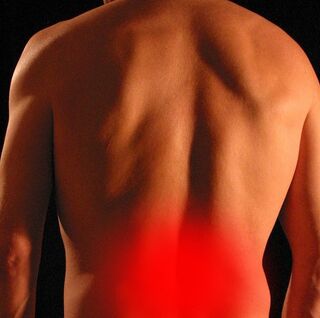Leadership
A Zest Intervention for Pain Management
Positive psychology interventions and exercise may help reduce pain.
Posted July 17, 2021 Reviewed by Vanessa Lancaster
Key points
- The use of medications for pain control is associated with risks (e.g., addiction), so it is important to consider mind-body therapies as well.
- Strength-based interventions, such as writing about character strengths (specifically, zest and enthusiasm), may improve pain.
- Exercise interventions may relieve pain too, perhaps by reducing pain sensitivity and increasing the pressure pain threshold.

The present article summarizes recent findings from two recently published papers on effective ways to manage pain.
A Strength-Based Approach to Managing Chronic Pain
In press in The Journal of Positive Psychology, a study by Graziosi and colleagues concluded strength-based interventions alleviate chronic pain and increase pain self-efficacy—confidence in “one’s ability to perform various tasks and function despite the pain.”
The first of two investigations these authors reported was a survey administered to 491 participants. According to the VIA (Values in Action) classification, analysis of the results found pain self-efficacy was most strongly associated with zest (i.e., energy, vitality, aliveness), which is one of 24 character strengths, according to the VIA (Values in Action) classification. Previous research has shown nurturing character strengths is associated with greater happiness, higher life satisfaction, and lower depression.
The second investigation compared the effectiveness of a zest intervention—writing about using the zest character strength each day for two weeks—with interventions involving two other character strengths (spirituality, leadership) and a control condition.
It concluded zest was linked with the highest level of pain self-efficacy.
To illustrate what it means to use zest during daily activities, here are some example responses from the participants:
- “I decided to show greater zest when I say good morning to my wife.”
- “I used more zest by telling all of my co-workers how awesome I thought they were on a conference call. I told them this with great enthusiasm.”
- “I started reading a book for pleasure….[which is something] I rarely find the energy to do, but this time convinced myself that exhibiting zest means following through on things that I know I want.”
A more rigorous third investigation (81 participants) replicated the above finding, showing “the zest group had less interference with their functioning from pain and more pain self-efficacy than a control condition.”
So, these findings suggest people experiencing pain might benefit from thinking about and using character strengths such as zest regularly.
Exercise Training for Pain Management
Let us now consider a different approach to pain management: Exercise.
Exercise can reduce pain using various mechanisms, one of which involves increasing the pressure pain threshold. This means regular exercise is thought to increase the minimum level of pressure needed to induce pain.
And this is what was reported in a recent review by Belavy and collaborators, published in the January issue of Neuroscience & Biobehavioral Reviews. The data suggested that compared to non-exercise interventions (e.g., massage, pain education, stress management), exercise training was more effective at reducing pain sensitivity, especially at the site of the pain.
The conclusion was based on a qualitative analysis of 18 trials (1,121 participants). The interventions ranged from four to 16 weeks and consisted of resistance training, aerobic exercises, Pilates, stretching, and sensorimotor training. The patient samples included individuals with fibromyalgia, Achilles tendon pain, type 2 diabetes, neck pain, shoulder pain, and trapezius muscle pain.
The findings showed exercise reduced pain sensitivity, particularly for patients with fibromyalgia and neck, shoulder, and upper back pain.
How does exercise reduce pain sensitivity? According to the authors, exercise “may alter pain processing by increasing cerebral perfusion and cortical inhibition, moderating inflammatory and immune response to perceived or actual harm.” Regular exercise training could promote “central neuroplastic changes theorized to alter pain processing, while regional musculoskeletal adaptations can reduce pain by reducing associated dysfunction.”
Exercise may also counter the effects of mental health issues like depression and avoidance behaviors (i.e., avoiding activities due to fear of experiencing more pain). Engaging in avoidance behaviors could, over time, result in deconditioning and a decreased sense of self-efficacy, thus worsening pain and pain-related disability.

Recommendations for Managing Pain
Pain, especially when chronic, often causes mental health problems (e.g., stress, anxiety, anger, sadness) and dysfunction (e.g., inability to work, socialize, or perform activities of daily living). These consequences of uncontrolled or untreated pain can worsen the pain itself and lower one’s quality of life even further.
Indeed, research shows pain is affected by health, social, and lifestyle factors (e.g., loneliness worsens pain) and influences them in turn (e.g., chronic pain making it more challenging to socialize), creating a vicious cycle.
For these reasons, it is important to treat pain as early as possible. And to adopt a holistic approach to understanding all the contributors to the development of pain, its maintenance, and amplification, but also to the control or relief of pain.
The present article discussed the potential benefits of exercise and character strengths interventions (i.e., zest) in improving pain. Some of the most commonly used holistic options for pain management are mindfulness training, meditation practice, biofeedback, laughter therapy, guided imagery, hypnosis, autogenic training, relaxation, breathing exercises, spiritual therapy, and energy healing (e.g., prayer, therapeutic touch practices like Reiki), aromatherapy, tai chi, yoga, and qi gong. However, other mind-body techniques for pain management may be worth considering too.
Of course, the answer to the question of what particular intervention will work best for pain depends on the condition being treated (e.g., irritable bowel syndrome vs. rheumatoid arthritis pain). In terms of what works for most chronic pain conditions, however, one review study reported “weak positive evidence” for “yoga, relaxation, tai chi, massage, and manipulation,” but “strong evidence” for the use of “acupuncture as a complementary treatment.”
Let me end by noting there is limited high-quality research on the effectiveness of many alternative treatments for chronic pain. Nevertheless, most are considered safe, or at least not as risky as the long-term use of addictive painkillers such as opioids.
So, if you are struggling with chronic pain, ask your doctor if it might be worth trying some of these mind-body therapies for pain.




